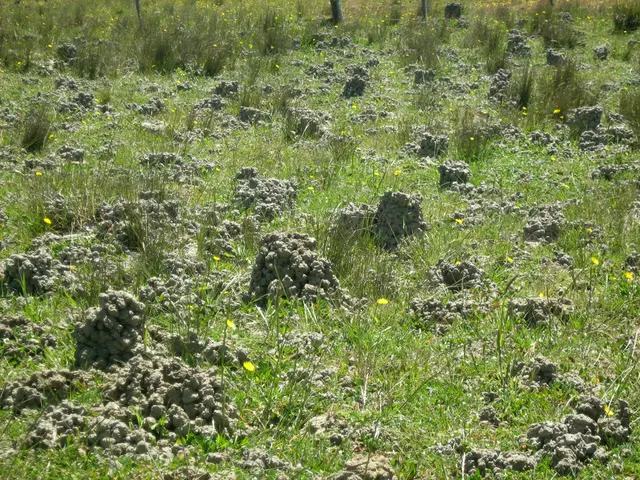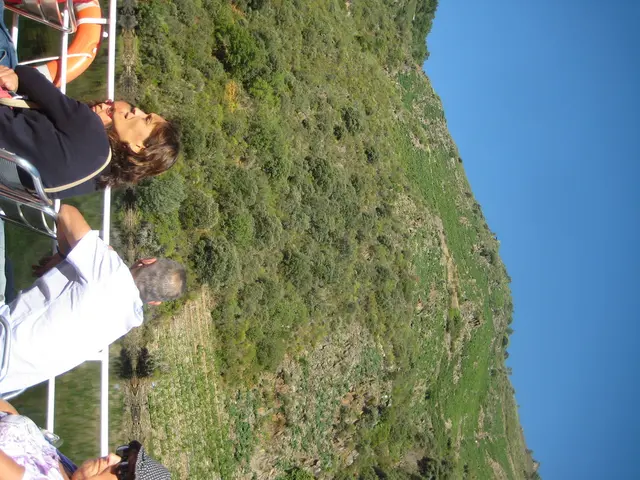Uncovering the Ancestors of Modern Ants: A Closer Look at the "Hell Ants"
Ancient Ant Specimen Reveals Unusual Jaws for Preying, According to Scholars
In the realm of predators, the picture doesn't always involve massive, clawed beasts. Go back 100 million years, and a tiny, terrifying predator emerged, sporting scythe-like jaws capable of impaling its prey. Meet the "hell ants," a group of extinct ants known for their vicious hunting strategies.
Recently, researchers unearthed a new member of this creepy clan, dubbed Vulcanidris cratensis, during their exploration of a fossil insect collection at the Museum of Zoology at the University of São Paulo, Brazil. This ant is called one of the oldest ant species ever discovered, belonging to the long-extinct subfamily Haidomyrmecinae.
As the name suggests, Haidomyrmecinae's primitive, terrifying nature led them to be called "hell ants." They inhabited Earth during the Cretaceous period (145 million to 66 million years ago). The strange jaw structures, resembling scythes, are what set them apart from their modern counterparts.
Anderson Lepeco, a researcher from the Museum of Zoology at the University of São Paulo, elucidated, "We've discovered a new fossil ant species that represents the earliest undisputable geological record of ants. What makes this discovery particularly interesting is that it belongs to the extinct 'hell ant,' infamous for their bizarre predatory adaptations."
In a study published in the journal Current Biology, Lepeco and his colleagues studied the preserved ant using micro-computed tomography, a 3D imaging technique. Their analysis revealed the ant's mandibles, or mouth parts, pointed forward and were likely used to pin prey. Compared to modern ants, this unusual structural adaptation hints at ancient ants' aggressive, specialized hunting methods.
"Discovering such an anatomically specialized ant from 113 million years ago challenges our assumptions about how quickly these insects developed complex adaptations," Lepeco added. "The intricate morphology suggests that even these earliest ants had already evolved sophisticated predatory strategies that were significantly different from their modern counterparts."
Interestingly, the researchers found that the Vulcanidris cratensis was related to other previously discovered hell ant species found in Myanmar's amber. Given that the fossil was discovered in the Crato Formation—a popular fossil hotspot in northeastern Brazil—these findings hint at the widespread distribution of Haidomyrmecinae ants 113 million years ago, shedding light on their early evolution and biological dispersal.
"My team and I are excited about this extraordinary specimen, not only as a new species but as the potential definitive evidence of ants in the Crato Formation," Lepeco said. "This discovery underscores the need for careful examination of existing collections—both private and in museums—to further our understanding of ancient life forms, and brings attention to Brazilian paleontology and the underexplored fossil insect fauna of the country."
In summary, the study provides insights into ants' early evolution and their successful expansion across the globe, providing new insights into one of the most celebrated insects on Earth.
Specialized Predators of the Cretaceous
- Scythe-like Jaws: The Haidomyrmecinae possessed unique, upward-curved jaws, tailored for pinning or impaling prey. This specialized jaw structure suggests sophisticated hunting strategies far removed from modern ants.[2][4]
- Horny Protrusions: Some species sported horn-like protrusions above their mouths, which may have helped secure prey during capture.[4]
Global Distribution and Persistence
- Cretaceous Range: Haidomyrmecinae was present in various regions, including France, Myanmar, Canada, and Brazil, demonstrating their ability to adapt to diverse climates and landscapes during the Cretaceous period.[3][4]
- Ecological Flexibility: The presence of hell ants in diverse paleoenvironments, like the Crato Formation in Brazil, shows their resilience to ecological changes, underscoring their adaptability in different ecosystems.[3]
- The unique, upward-curved mandibles of Haidomyrmecinae resemble scythes, a technology that set them apart from their modern counterparts.
- Paleontologists are intrigued by the discovery of Vulcanidris cratensis, an ancient ant species related to the 'hell ants', due to its implications on science and environmental-science.
- Researchers studied the preserved ant using micro-computed tomography, a technology from the realm of science, to learn more about space-and-astronomy and lifestyle in the Cretaceous period.
- The findings suggest that Haidomyrmecinae had a global distribution, living in diverse regions such as France, Myanmar, Canada, and Brazil.
- In the world of education-and-self-development, the discovery of the Vulcanidris cratensis emphasizes the importance of exploring museum collections and fostering curiosity about the past.
- With hairy protrusions above their mouths, some species of Haidomyrmecinae may have used these features for grasping and securing prey, a fashion-and-beauty twist on thepredatory techniques of ancient ants.
- The study of ancient ants such as Vulcanidris cratensis also extends into the realm of travel and exploration, as the fossil was discovered in Brazil, a country rich in fossil insect fauna waiting to be discovered.
- As more research is conducted on fossils like Vulcanidris cratensis, the world of casino-and-gambling might someday benefit from finding out whether these ancient ants had any elements of luck or strategy in their hunting methods.








